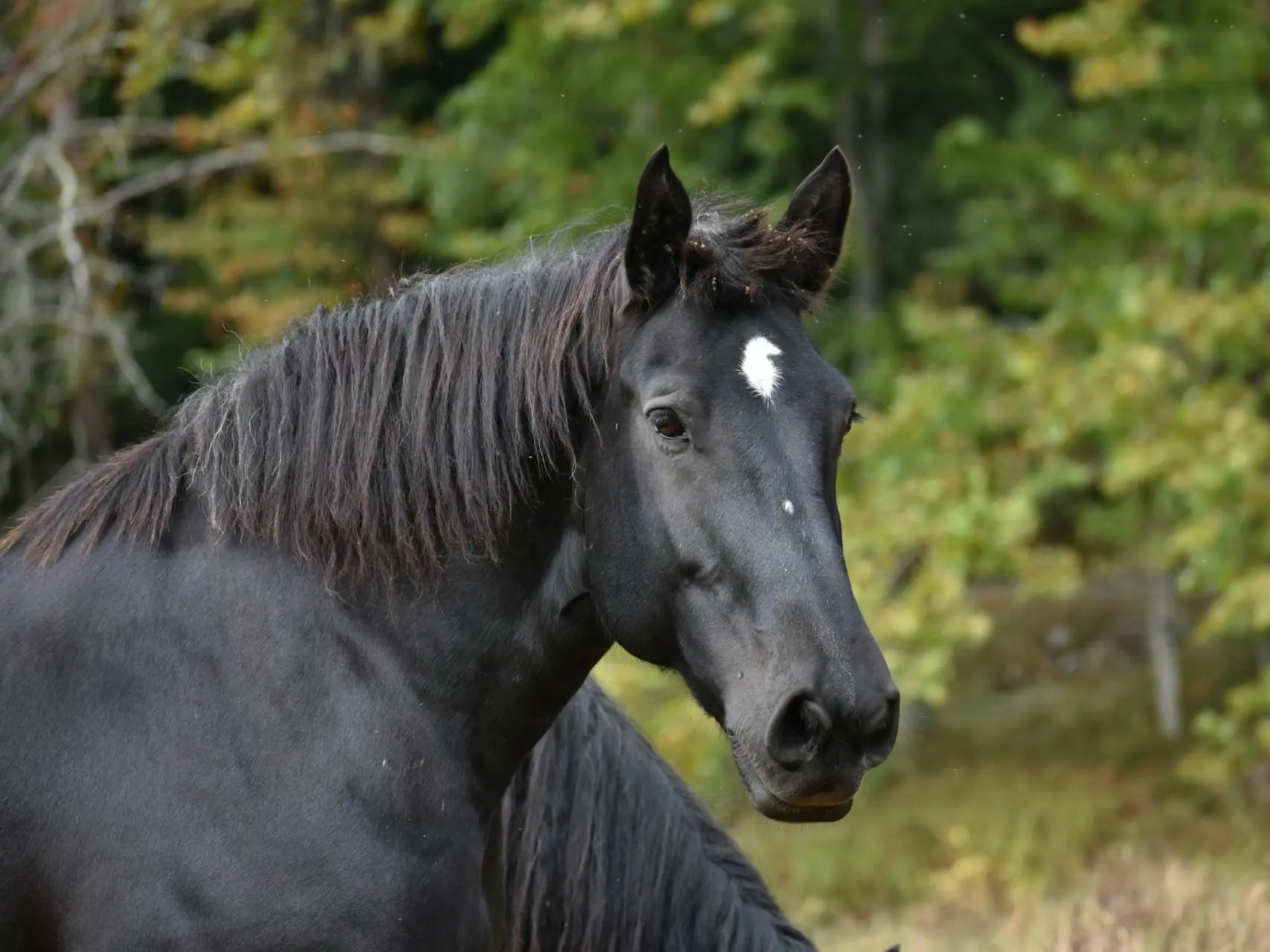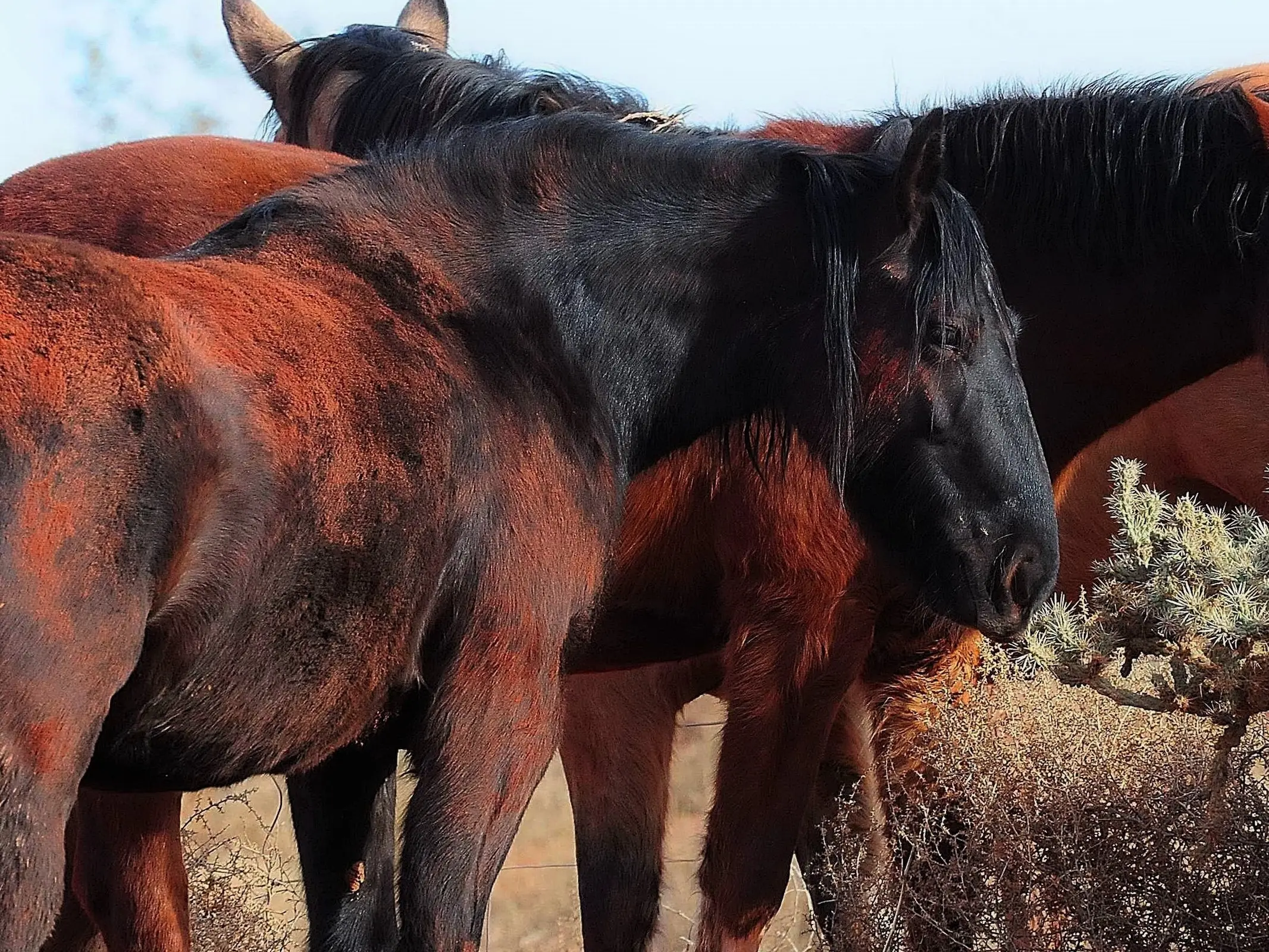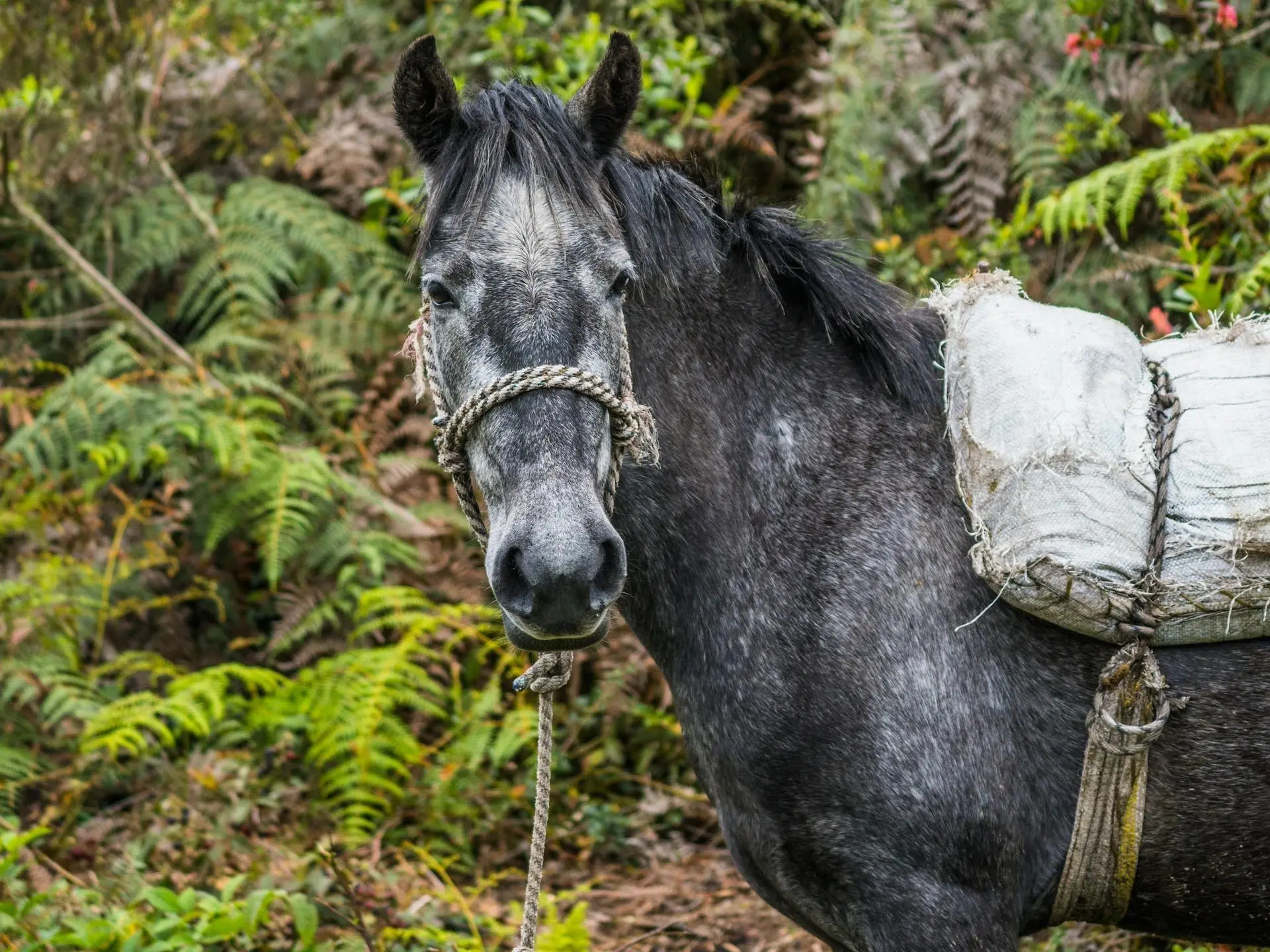
There are four base horse coat colors, black, chestnut, bay and brown. These four bases along with various modifiers and dilutions provide us the vast spectrum of solid horse coat colors. Black, bay and brown coats are caused by the agouti gene and it is the recessive agouti allele that causes a black coat with no red hairs.
Basic Black
A true black will display only black hairs on their body. Although they may carry white markings on their face or legs, black animals have no red hairs. While this color can be found in many breeds, black animals do better in colder climates. Most horse and pony breeds that breed for black come from northern countries and it can be difficult to produce black foals, even with black parents.
Black Breeds
Although many breeds can be black, a few of them are known specifically for their ebony coat, including the Friesian, Murgese, Kladruby, Nonius, Kabarda and Irish Draft. Some ponies are also recognized for often being black including the Ariegeois Pony, Fell Pony and Dales Pony.
Although there aren’t different shades of black, there are three types – fading, non-fading and seasonal.
 Non-Fading Black
Non-Fading BlackCan be born grey, growing darker as they mature until they are almost a blue-black color. The black of their coat does not fade.
 Fading Black
Fading BlackCan be born grey or brown and grow darker with age. Their coats can be bleached lighter to dark brown by sun and sweat exposure.
 Seasonal Black
Seasonal BlackCan be born lighter and become black. Their coats fade seasonally, sometimes to almost bay in color, then shed to black.
Modifiers and Dilutions on Black Coats
Black based animals are not affected by most of the coat modifiers, however a few of the dilution genes have a fairly drastic affect on black hairs. Creating some of the more spectacular and rarer colors in the horse world.
 Dun Dilution
Dun DilutionThe dun dilution on a black base creates a a grey color called grullo. A dun animal can be easily recognized by the stripe down the center of their back.
 Cream Dilution
Cream DilutionFor the cream dilution to have any affect on a black coat it has to be a double dilution and creates a pearly white coat with pink skin and blue eyes.
 Silver Dilution
Silver DilutionThe silver dilution has quite a spectacular affect on a black base. It is often called silver or chocolate dapple, as it can produce dapples on the body.
 Champagne Dilution
Champagne DilutionChampagne causes a rather dramatic lighting on black hair, causing the body to range from golden to pale brown, mane and tail remain dark brown.
White Patterns on Black Coats
White patterns can be found across any coat color, but black bases makes for some of the most spectacular contrasting white patterns.
 Grey White Pattern
Grey White PatternA grey animal will be born black and grow lighter as they age until they are pure white, changing seasonally.
 Appaloosa White Pattern
Appaloosa White PatternAn expression of the leopard complex, appaloosa white patterns display a huge variety of spotted patterns.
 Pinto White Pattern
Pinto White PatternThe pinto white pattern on a black base is called a piebald and comes in an array of contrasting designs.
 Roan White Pattern
Roan White PatternThe roan white pattern on a black coat creates an almost blue color and are generally called blue roans.